The painful symptoms in the lumbar region are concerned about 80% of the planet's population in different stages of life.Often these are manifestations of osteochondrosis.Doctors affirm the fact: the disease is no longer the fate of the elderly.The symptoms of the disease are increasingly manifested in people who have not reached a 30 -year age group.Without treatment, osteochondrosis leads to the complete immobilization of the lumbar column and the subsequent disability of the patient.
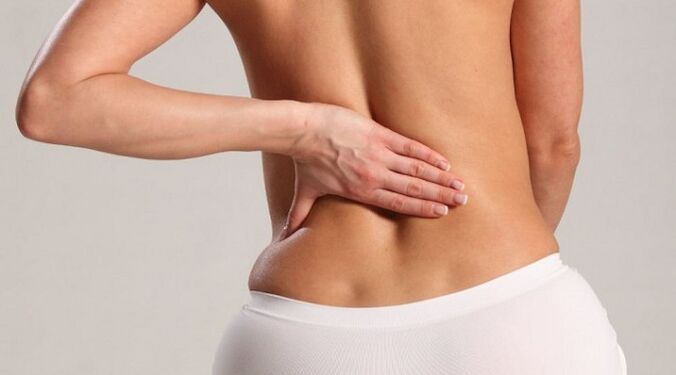
What is osteochondrosis of the lumbar column
The diagnosis implies the course of degenerative processes in the cartilage, which consists of intervertebral joints.Osteochondrosis in the lower back is characterized by changes in the joints and vertebrae precisely in the lumbar region.
Osteocondrosis is a gradual degeneration of cartilage in the bone.
Often osteochondrosis ends with the formation of an intervertebral hernia, which is a source of constant back pain in the patient.Pop osteochondrosis gives rise to pinching of nerves, as well as blood vessels, causing a violation of the tissue trophic of internal organs, which is framed of symptoms of functional disorders in the functioning of the body.
The causes of lumbar disease
The osteochondrosis of the spine belongs to a series of diseases, whose exact causes have not yet been established.It is known that the defeat of the spine is preceded by metabolic disorders, which can guide a huge number of adverse factors.The most common examples:
- Acute lack of movement.
- Details of the electrolyte metabolism.The intervertebral joint trophy is disturbed due to chronic diseases.
- Congenital or acquired violations of the Oda.
- Expensive physical activity is the most common reason.
- Wrong lifestyle.The abuse of salt, fried, fat and smoked products leads to dystrophic changes in the intervertebral joints.
With osteochondrosis, the muscles of the back are gradually atrophy, the patient begins to bend over.
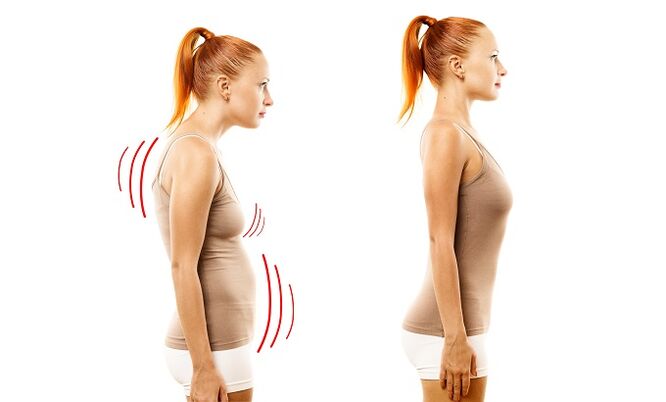
Doctors note a hereditary predisposition to the development of the disease.In addition, the provocative factors include the lack of treatment for spinal curvature: lordosis, scoliosis, cifosi.
Characteristic symptoms
The signs of osteochondrosis of the lumbar region are characterized by the appearance of various symptoms, as well as by the development of three pathological syndromes: root, ischemic, spinal.
The symptom of pain may appear:
- Lumagly- painful lumbar pain.The symptom disappears almost completely when the body is placed in a horizontal position.
- Lumbago- Lightning pain.The symptom is distinguished by the ability to radiate.
- Sciatica- lumbar pain that spreads in buttocks and legs.The symptom is accompanied by the loss of the sensitivity of the surface tissues.
The rear in the rear is compared with the current shock and the patient blocks in the position in which there is no pain.
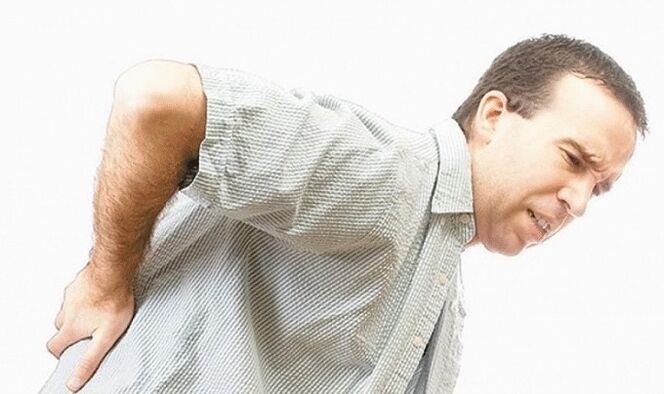
The signs of lumbar osteochondrosis includes symptoms of specific syndromes:
- The symptoms of root syndrome include perforation pain in the area innervated by a pinched nerve.At the same time, the epicenter of painful symptoms is observed in the limbs, in the buttocks, in the hips and in the bottom of the abdomen.
- The symptoms of ischemic syndrome are associated with circulatory disorders, a lack of flow in some nutrients.
- The symptoms of spinal syndrome include muscle atrophy, vertebral shift, a change in the position of the pelvis, which leads to obvious changes in the patient's pace and method of movement.
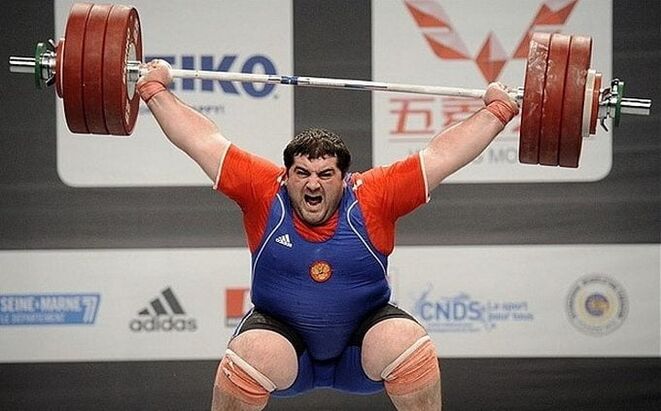
When the gravity of the nerve roots and blood vessels are raised, they are crushed and the pain in the nervous area begins to disturb.
Differences from other signs disorders
The arranged lesions of the vertebrae of the lumbar region are accompanied by a series of characteristic symptoms only for this disease:
- Constant cold of buttocks of buttocks and hips.
- Reduction of libido, impotence.
- The feeling of goose skin inside the thigh and buttocks.
- Increased dry skin on the lower back and buttocks, accompanied by peeling.
- Teenager for constipation.
- Urine incontinence.
- A burning feeling in the sacred.
The complete coincidence of the manifestations of the disease with the symptoms described requires diagnostic studies to confirm the diagnosis (magnetic resonance imaging, radiography, computerized tomography).
Determination of the stadium and type
Intervertebral osteochondosis can be acute and chronic.Very often there is a transition of the disease in slow form, since it is difficult to completely cure the disease.Chronic osteochondrosis is characterized by the normal onset of recurrence: they complicate the patient's life during the season out of season.
The local degenerative changes are quite rare.Often the destruction of the vertebrae of the lumbar region is accompanied by a common osteochondrosis, which simultaneously affects different parts of the spine.The disease is characterized by the vastness of pain and evident patient's mobility disorders.
4 degrees are distinguished by osteochondrosis:
- Initial changes.The nucleus of the jacket moves inside the disc.Symptoms - Refuges can occur in the affected section.
- Damage to the fibrous ring.More cracks are formed, an increase in the mobility of the vertebrae and hypertonicity of the closest muscles are observed.
- Breakage of a fibrous ring.It is accompanied by a strong pain in the department, the formation of hernias and the root syndrome.
- Deformation of the spine.It is accompanied by a movement of the vertebrae, as well as by the growth of the bone tissue of the spine, which leads to the patient's immobilization.
The stage of the development of the disorder is determined by a vertebrologist using a palpation exam and diagnostic measures.
How the osteochondrosis of the lumbar region is treated
The treatment of osteocondrosis of the lumbar region depends on the degree of changes.A prerequisite: timely preparation measures, conducting an examination and choice of a treatment tactic not to start the disease.In the subsequent stages of osteochondosis of the lumbar region, only the surgical treatment of the spine (vertebroplasty) is effective.
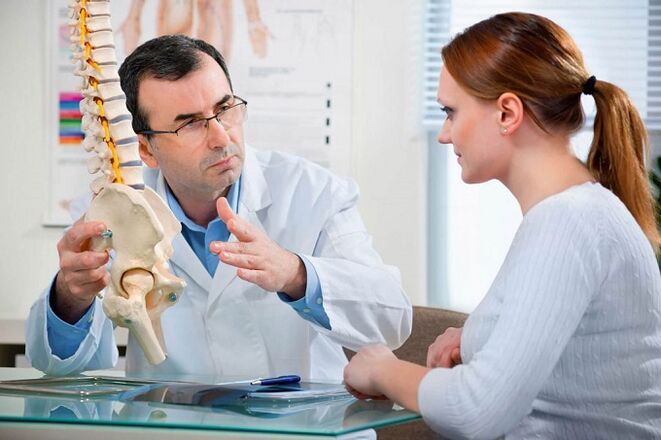
It is very important to consult a doctor for treatment in time, since in the late stages of the osteocondrosis, only the surgical treatment of the spine is effective.
The treatment of lumbar osteochondosis has the main objectives:
- Elimination of the cause of dystrophic processes.
- Removal of the symptoms of the disease.
- Activation of the restoration of intervertebral joints.
- Strengthen the muscle system.
To achieve the objectives, a series of measures is used, including operating therapy, physiotherapy, diet, pharmacological treatment, massage.An important condition is regularity.Methods for the treatment of osteochondrosis may include the fixation of the interested area of the rear part with corsets.Getting rid of osteochondrosis and preventing its relapse will help kinesiotherapy.
Therapeutic hunger is carried out in agreement with the doctor.As a rule, respect for the principles of a healthy diet, information to the minimum use of salt, as well as the normalization of the drinking regime.
With a serious osteochondrosis of the lumbar column, it may be necessary to respect the bed regime to the first treatment.After eliminating severe pain, the patient should get up, perform elementary physical exercises.
With osteochondrosis of the lumbar department, doctors complete the treatment regime with physiotherapy procedures:
- Electrophoresis.
- Magnetotherapy.
- Acupuncture.
- Electroacopuncture.
It is important to observe the regularity of the procedures for osteochondrosis, as well as undergo a complete course of treatment.
With osteochondrosis of the lumbar column, as with other locations of the disease, an increase in physical activity is recommended by performing exercises recommended by the orthopedic doctor.
If the belt will help
It is worth choosing a belt for the lower back with osteochondrosis only with the attending physician.There are bandages, corsets, heating and neoprene belts that have various indications and contraindications for their application.
Wearing a corset and a bandage is one of the main auxiliary methods to restore the joints.The hard belt of the osteocondrosis fixes the lumbar region in a certain position, removes the load from the muscles and joints.A heating belt for osteochondrosis can be used independently to eliminate pain and prevent the impact of the disease.The dog belt protects the lower back of the drafts well, relaxes the muscles.
With serious damage, only a doctor selects the belt for the treatment of osteochondrosis.As a rule, these are improved hard trips that provide the immobility of the lumbar and sacred column.
Massage
With lumbar osteochondrosis, a therapeutic massage course is indicated, aimed at normalizing the trophic joints of the lower back and bringing the muscles to a normal state.The massage should be performed by a specialist.The contraindication for osteochondosis for massage is intervertebral hernia.The manipulations are prohibited that involve a strong mechanical effect (the use of plastic devices and vibration masseurs).
Exercises
Exercises for the lumbar column within the framework of operating therapy for osteochondrosis should select an orthopedist.General rules for the treatment of physical exercises:
- The predominance of static exercises.
- Lack of acute movements during execution.
- Moderation of physical activity.
- Said methods that exclude the destruction of the vertebrae.
The regularity of physical effort is important.The exercises from the osteochondrosis are included in the morning charging program, performed daily.
Drug therapy
The duration of the course of treatment for osteochondosis of the lumbar column, as well as the list of medicines, are determined by the doctor.
At the beginning of the therapy, they are prescribed:
- Fans' injections.
- Vitamins injections of group V.
- Condroprotective injections.
- Injections of muscle relaxants.
- External fans.
After eliminating serious pain and acute inflammation, the patient is transferred to forms of compressed drugs.The first two weeks continue to treat fans.The use of chondroprotectors involves prolonged complete treatment with a combination of internal and external dosage forms.
When the lumbar disease are detected in the early stages, the medicines of the condroducecers group are prescribed.The minimum duration of their reception is 3 months.In the absence of pronounced painful symptoms, the internal use of the NSAIDs is replaced with external pain relievers to reduce the negative effect of the pharmacological agents on the gastric mucosa.
With severe pain, the blockage is performed: the introduction of analgesics in the affected area of the lower back.
The symptoms of advanced lumbar osteochondrosis are able to ruin a person's life.For a successful treatment of the disease, it is necessary to consult a doctor at the first signs of the disease: pain in the lower part of weak gravity.Timely complex therapy can prevent irreversible changes in the lumbar column.


























